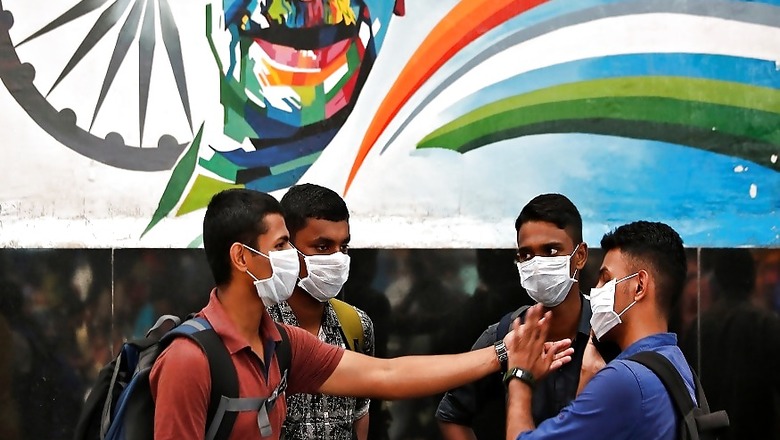
views
A study conducted by scientists in India has claimed that increase in the number of novel coronavirus patients in India has been very slow and every Covid-19 positive person has been passing on the infection to only another 1.7 people on an average.
According to Indian Express, scientists Soumya Easwaran and Sitabhra Sinha at the Institute of Mathematical Sciences in Chennai, compared the number of cases in India with other countries as part of a study and found that the number is “remarkably lower than what has been observed in the worst-affected countries.”
Comparisons with Iran, China’s Wuhan
The study, according to the report, said that in Wuhan, the epicentre of novel coronavirus in China, every person transmitted the virus to 2.14 persons on an average. In Iran and Italy, this number has been 2.73 and 2.34, respectively.
“If the same rate persists, India is likely to have around 200 positive cases in the next five days. However, at the upper end of this projection, the number can go up to as many as 500,” Sitabhra Sinha was quoted as telling Indian Express.
The R-Naught Factor
The report explained that R-naught is a frequently used to estimate how contagious an infectious disease can be. “It can help in making projections for the number of people likely to be affected by such a disease and is often used to decide on the kind of policy interventions required to halt the epidemic.”
Disease would not take the form of an epidemic if less than one value for R-naught is recorded. “Any value more than one indicates an exponential rise in the number of patients. Significantly, this number is applied only in cases of outbreak of new diseases, in which the entire population is equally susceptible to being infected.”
Reasons for Low R-Naught
There could be several reasons for a low R-naught such as the possibility of inductive climatic conditions for the survival or viral, timely isolation of patients and effectiveness of the lockdown measures, the study said.
The scientists said that in the absence of any supporting data currently, all these reasons are only speculative, and as of now they do not know the exact reason for a low R-naught. They are waiting for the impacts of government measures to start getting reflected in the data to have some idea, which can take a week.
The scientists observed that R-naught is not static and reacts to external factors and interventions designed to control it. It would not be advised to solely depend on a higher R-naught to assess a rapid growth in the number of positive cases, they said.
Sinha said that the low R-naught number for India did not seem very unusual and also suggested that the country’s distance from the equator might have some correlation with how fast the virus was spreading. But he said there was no indication yet that this was linked to temperature.




















Comments
0 comment